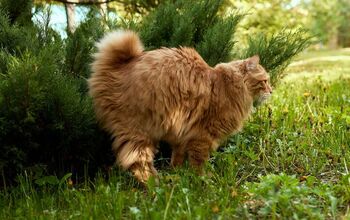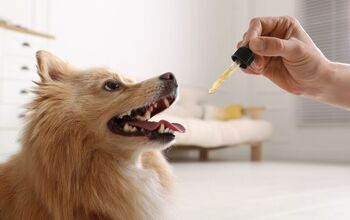Golden Newfie


About Golden Newfie
The larger than life Golden Newfie is a great family pooch that comes from crossing two sweet-natured large-breed dogs; the hard-working and keen-to-please Newfoundland and the famously gentle and easygoing Golden Retriever. The end result is a great big ball of fur that loves to be involved in all things family and is up for any and all outdoor activities. This handsome boy is also a highly loyal, protective dog that is ready to step in to defend his human pack – typically through the intimidation of his girth and barking versus taking on an aggressive approach. Because both parent breeds thrive on human companionship and develop strong bonds with their families, they can suffer from separation anxiety when left on their own and this can result in destructive behaviors. Its likely your Golden Newfie will suffer this same affliction which makes his ideal home situation one where his pet parent or a family member are home during the day or perhaps where he can develop a close relationship with a dog walker that can visit throughout the day to calm frazzled nerves.
The great big Golden Newfie brings together the sweet-natured Golden Retriever and the eager-to-please Newfoundland for a wonderful family dog.
Because he is a cross of two pure-bred dogs, the Golden Newfie is considered a Designer Dog – a term that first became popular 30 years back and refers to the crossing of two (or more) breeds to develop a dog that is healthier, is sometimes non-shedding and often smaller and gentler than many of the popular breeds of the day. With the Golden Newfie, his parent breeds are the Golden Retriever and the Newfoundland and while his Designer status means he himself is a relatively new breed, both parents have some pretty impressive history. The Golden Retriever was developed in Scotland back in the mid-1800s in response to the need for a dog that was adept at retrieving downed waterfowl on both land and in water. Today, there are British, American and Canadian variations on this popular breed all of which include a gentle, sweet-natured personality. Now, the Newfoundland’s history is still under debate but it appears he was first brought to Canada from Europe in the 1700s by fishermen who used him to haul fishing nets, pull boat lines to shore and rescue those who had fallen overboard. Today, this large dog is still used as a water rescue dog where he swims out to those in peril and either drags or allows them to hang on as he returns to shore.
The Golden Newfie doesn’t qualify to join the American Kennel Club (AKC) because they are committed to advocating for pure-bred dogs versus cross breeds. However, both of this dog’s parent breeds are AKC members that date back to the 19th century. The Newfoundland joined the club’s “working” group way back in 1886 and is described as sweet, patient and devoted while the Golden Retriever was inducted in 1925 to the “sporting” group and is considered a friendly, intelligent and devoted dog.
This is a big boy with a big appetite and its important he not feel the need to overeat to get the nutrients he needs to be healthy and feel satisfied. For that reason, choose a high-quality kibble that provides him with protein (over fillers/carbohydrates) that will fill him up and prevent him from feeling continually hungry and trying to sneak or mooch food. His kibble should be specifically designed to meet his needs from a size, age and activity level and because his Newfoundland DNA may leave him susceptible to bloat, plan to feed him multiple smaller meals throughout the day versus allowing him to free-feed. This pooch can be a bit lazy and as he may be prone to joint issues later in life, it’s important you establish and maintain an ideal weight by providing him with the right mix and amounts of food and treats early on.
In spite of his size, the Golden Newfie is a gentle, playful family dog.
While the Golden Newfie is the offspring of two highly intelligent breeds that are quick to pick up commands and are known to be people-pleasers, the Newfoundland side of this pooch brings a bit of a stubborn streak that may require a little extra patience. As with most dogs, a firm, consistent approach that is rewards-based to include treats and lots of verbal praise, will go a long way in getting the results you’re looking for. In addition to obedience training, socialization is also an important part of grooming a dog to be a great companion and this comes with early exposure to other animals and new experiences such as puppy training classes.
Once he reaches adulthood, a healthy weight for this large-breed dog will land somewhere between 100 to 125 pounds depending on gender and whether he exhibits more of the Golden Retriever or the Newfoundland DNA.
In spite of his size, the Golden Newfie is a gentle, playful family dog that brings the sweet natured personality of the Golden Retriever together with the calm, easy-going character of the Newfoundland. Not surprisingly, this pooch gets along with other pets including smaller animals and other dogs. Although he is loyal and protective, this handsome boy is more inclined to guard by barking and posturing versus resorting to biting or attacking strangers. Happily, he loves interactive playtime because with a dog this size, he needs to be kept active in order to keep his weight in check. As both parent breeds thrive on human companionship and develop strong bonds with their families, the Golden Newfie doesn’t do well when left on his own for longer periods of time and can suffer from separation anxiety that includes destructive behaviors such as barking, chewing, clawing at doors and urinating / defecating in the house. The ideal home environment for him will have a family member available to keep him company or a dog walker who can forge a bond and visit throughout the day to help soothe fears and burn off a little energy.
As a Designer Dog, the Golden Newfie will typically be healthier than either of his pure-bred parents however it’s important you do your research to not only understand what he may experience down the line but to also help you ask the right questions when adopting your pup. With the Golden Newfie, he can inherit joint issues from both parents, certain cancers from the Golden Retriever, digestive issues including bloat and a degenerative heart condition called subaortic stenosis from the Newfoundland. While these may seem like a daunting list of expensive ailments, this dog is still considered a healthy pooch and it’s quite possible he may never experience any of these issues over his lifetime.
To ensure your Golden Newfie enjoys a long, healthy life ensure he receives plenty of exercise, a top-quality food and regular preventative maintenance check-ups with your vet. With this level of care, you can expect this large breed dog to be a part of your family for between 8 and 12 years – which is typical for this large size of pooch.
Like most dogs, the Golden Newfie is happy to settle in on a sofa and kill an entire afternoon. But with large dogs like this, who can gain weight easily and experience joint issues later in life, it’s important to get him up and moving. Interactive games like throwing a ball or Frisbee are a great way to engage this pooch and it not only helps with obedience training (retrieving) but also provides a great opportunity to bond. The Golden Newfie also needs to get out for a good long walk or run each day to meet his minimum physical needs and of course this water baby loves any opportunity to swim whether it’s a lake, pool, pond… The bottom line is that its important this dog get moving to not only keep him physically fit and mentally stimulated but to help him burn off energy and curb destructive behaviors. Regular visits to an off-leash park are another great way for him to run, play and interact with other dogs to help build his socialization skills.
The Golden Newfie gets along with other animals and while protective of his family, isn’t aggressive.
The Golden Newfie is also known as the Golden Newfy or Newfie Retriever and because he is a cross of two different breeds, he doesn’t qualify to become a member of the coveted American Kennel Club (AKC) – an organization that is dedicated solely to pure-bred dogs. That said, there are other, lesser known registries that have surfaced specifically to recognize designer dog breeds and as a result, the Golden Boxer is a fully-fledged member of the American Canine Hybrid Club (ACHC), Designer Dogs Kennel Club (DDKC), Dog Registry of America, Inc. (DRA) and the International Designer Canine Registry (IDCR).
The heavy, thick double-coat of the Golden Newfie is going to require a fair bit of maintenance to keep it matt- and tangle-free as well as prevent copious amounts of loose hair from floating around your home, your vehicle and clinging to your clothing. While brushing 3 to 4 times a week should be sufficient to keep his coat looking great and the hair in check, it’s pretty common for his hind-legs to become heavily matted so you will need to do some daily spot-brushing to keep it under control. As with most dogs, bathing should only be done on an “as needed” basis but because he loves to swim, it important you pay special attention to ensuring he is fully dried – particularly his soft under-coat. Damp or wet fur can result in fungal infections if left unchecked and for floppy-eared dogs such as the Golden Newfie, cleaning and drying of ears is critical to preventing smelly yeast infections. A quick, weekly ear inspection for dirt and debris is sufficient, with towel-drying after the cleaning and/or swimming to address damp fur.
Golden Newfies will typically have a litter of between 8 to 10 good sized puppies and like all dogs, they will do well with early socialization that includes gently introducing them to the sights, sounds and smells of new faces, experiences and other animals. This pup will grow quickly and with any large breed puppy, you need to be careful not to feed him foods that are high energy (calories) or high calcium as this can result in orthopedic diseases that occur in large, fast-growing dogs. Pups just can’t absorb the calcium and this can impact bone growth so speak with your vet if you want diet recommendations. Because the Newfoundland side of this pup can experience a congenital heart disease known as subaortic stenosis, ask your breeder to produce proof that the parent breed has been tested and is clear. If one parent carries the affected DNA, there is the potential that 75% of their offspring will be impacted. And because this little guy can have a lazy streak, ease him into an exercise routine when he is old enough to walk on a lead, but not so small that you risk stressing tiny joints.
Photo credit: eriklam/Bigstock.com; Life on White/Bigstock.com

Sharing space with three seriously judgy Schnoodles and a feline who prefers to be left alone. #LivingMyBestLife
More by Mary Simpson

























